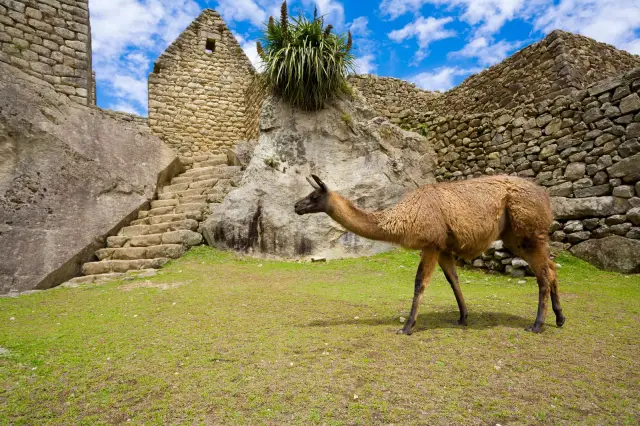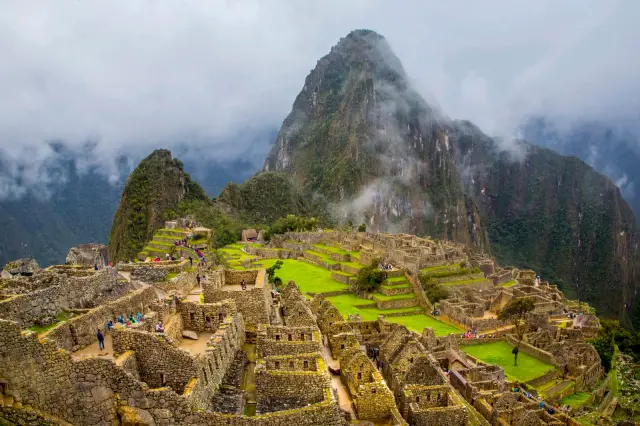The mystical Inca citadel of Machu Picchu , one of the most visited destinations in South America, dazzles with its imposing stone architecture, surrounded by mountains and clouds. But not every year is a good time to visit. Choosing the right time to travel can transform a spectacular visit into an unforgettable experience .
Between dry seasons, heavy rains, and waves of tourists, understanding the region's climate and dynamics is key for any traveler who wants to experience Machu Picchu in all its splendor. Throughout this article, we'll explore the best time to embark on the journey to this iconic site.
What is the best month to travel to Machu Picchu?
If you're looking for clear skies, good visibility, and safe trekking trails , May and September are the best options. Both months fall during the dry season, which runs roughly from April to October, but they're not at the extremes of mass tourism.

May offers mountains still green after the end of the rains, while September maintains stable weather and pleasant temperatures without the turmoil of winter. June, July and August also present ideal weather conditions , but it should be noted that they coincide with the school holidays in several countries and with the Inti Raymi festivities, so the tourist influx is high.
Tickets sell out more quickly, prices rise , and the tranquility of the trails is compromised. For those who prioritize the photographic experience, this season offers constant light and little mist in the mornings, perfect for capturing clear images of the mountain landscape.
A camera like the Panasonic Lumix or the Fujifilm X-T5 allows you to capture these moments in exceptional quality. Capturing Machu Picchu at dawn or in the full light of day can be the difference between a simple photograph and an unforgettable postcard .
When is it not advisable to go to Machu Picchu?
Although Machu Picchu is open year-round, there are times when the weather can significantly affect the experience . January and February are the least recommended months to visit the citadel.
During this period, rains can be intense, trails become slippery , and some alternative routes, such as the famous Inca Trail, even close for maintenance and safety .
Particularly in February, there is a high probability of landslides on some sections of the rail route and access roads, complicating arrivals. The Urubamba River 's flow increases, and there is also a risk of temporary service interruptions.
Visibility is significantly reduced, and characteristic landscapes are often hidden behind dense clouds or prolonged rain. In addition, during the rainy season, humidity can affect photographic equipment or electronic devices if they are not properly protected .
Travelers who choose to visit Machu Picchu during this time should prepare with waterproof clothing , protective bags for backpacks, and a flexible attitude toward unforeseen changes in the itinerary.
When is the rainy season in Machu Picchu?
The rainy season in Machu Picchu begins in November and lasts until the end of March , reaching its peak in January and February. During these months, the region receives most of its annual rainfall. Although rainfall is not constant throughout the day, it is frequent and intense.
Relative humidity increases significantly, with levels above 80%, and this can lead to conditions of dense fog or persistent mist, especially in the early morning hours.
Wet terrain can make access to some smaller archaeological sites difficult , while stone steps and terraces can be slippery. For those who prefer to avoid crowds and seek more affordable rates, this low season can be attractive, as long as they are willing to accept some weather risks.
It's also a good time for those seeking another side of Machu Picchu, a mist-shrouded city that seems to float among the mountains , almost suspended in time. The atmosphere these days has something spiritual, something cinematic.

Today, those who venture out to photograph Machu Picchu during the wet season know that the key is to have a camera prepared for unpredictable weather . A reliable example is the Panasonic Lumix , designed with a sealed body that withstands dense fog, constant rain and high humidity without compromising performance .
What is the best season to travel to Cusco?
The city of Cusco, the gateway to Machu Picchu, also deserves special attention regarding its ideal season. Cusco shares the climatic pattern of the Andean region, with a marked division between the dry season (April to October) and the rainy season (November to March).
The months of June through August are the driest and coolest, with clear skies and traditional festivals such as Inti Raymi and Corpus Christi, which add a cultural dimension to the trip.
During the dry season, nighttime temperatures can drop to 5°C or less, but the days are mild and very sunny. This makes for great excursions and hikes both within the city and around the Sacred Valley.
It is during this time that it is recommended to spend at least a couple of days in Cusco to acclimatize to the altitude before visiting Machu Picchu , reducing the risk of altitude sickness.
